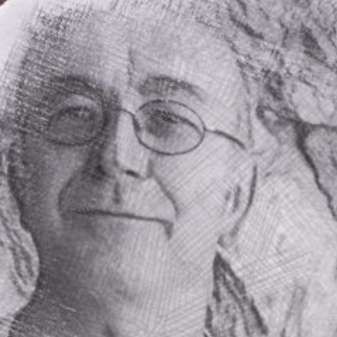If asked to single out one moment which illustrates the value of dynamic contrast in music, I might choose 'Montagues and Capulets' from Prokofiev's ballet Romeo and Juliet. As a prelude to this 'Naked Classics' exploration the RSNO played a short extract of the movement. Within seconds, even a stranger to the story could have identified two key ingredients: tension, leading to explosive violence (exemplified through crescendi soon culminating in huge, dissonant chords); numbing, heart-breaking tragedy (portrayed by near-directionless, yet unmistakably grave harmonies). This movement also contains the rangy, stalking theme which many will now associate with that monument to hubris, The Apprentice.
The evening's engaging presenter Paul Rissman then embarked upon a brief and humorous history of the work. It was not always as well received as was about to be the case this evening. The Bolshoi Ballet rejected it as 'undanceable'. There was also the complication of Prokofiev's original happy ending, which he laconically justified by pointing out that the living can dance whereas the dead cannot. In addition to the ballet score, Prokofiev published three suites and the RSNO compiled from these one suite of ten movements.
Paul Rissman's informative and very entertaining analysis of the piece employed a variety of techniques and aids. Chief among these – with the obvious exception of having a live orchestra at his disposal – was an overhead screen containing beautifully crafted titles, helpful graphics to unite eyes and ears, and musical examples. Many of the notated examples employed highlights 'in real time' to help the audience pick out key aspects of the main themes and their orchestration.
The movement which received the most lengthy attention was 'The Death of Tybalt'. The music depicts the death of Romeo's friend Mercutio at Tybalt's hands, Romeo avenging this death, and Tybalt's funeral cortège. Rissman engaged us in a little audience participation to highlight the cross rhythms which, I felt, perfectly matched the unpredictable footwork of swordplay. Encouraging us to try left hand against right, then feet against hands, our final challenge was one half of the hall against the other. This embodiment of rhythm could only have increased appreciation of what soon followed – specifically, the terrifying tempo of the string writing: a sustained passage in excess of 10 notes-per-second. The ensemble here was outstanding. The funeral section, despite opening with a unanimity of striking chords, soon begins a tangle of simultaneous themes, reminiscent of the music which Ives had been producing across the Atlantic. I felt that this tense passage magnificently captured the spirit of grief and mixed memories present at such an occasion.
A similar complexity was highlighted in the movement portraying young Juliet. Rissman used the term '3-D portrait' when highlighting the three themes, suggesting complexity of character. The first of these – a delight of orchestration – depicts the youthful, mischievous side of her personality; a second theme, for clarinet, which was beautifully rendered by John Cushing, suggests an alluring nature; a third theme, involving flute, cellos and, unusually, saxophone seems to hint at coming misfortune.
Thomas Søndergård complemented his conducting role by engaging in conversation with Rissman about the piece. When one illustration involved conducting – microphone still in hand – it became obvious how fluid, flexible and ambidextrous his technique is.
The second half comprised an uninterrupted performance, uniting the threads of the first half's deliberations in a dynamic, expressive whole. It was truly magnificent. Although not singled out in many of the illustrative passages, the brass section – trombones in particular – excelled themselves, adding real muscle where required. They were ably supported by vital contributions from the percussion section. When the RSNO laid poor Juliet to rest, a very full Usher Hall erupted and the sustained applause and cheers must have made it clear to the performers that they had nailed this one.
This was my second 'Naked Classics' experience, the first having been Sibelius' Fifth last November. I'm very taken with the format and cannot imagine a better frontman than Rissman, who communicates thorough knowledge of his subject with a light touch still relatively rare in classical music. The final such event of the 2011/12 season is scheduled for 27 April when the subject will be Mendelssohn's Scottish Symphony.


